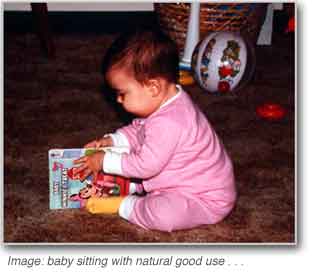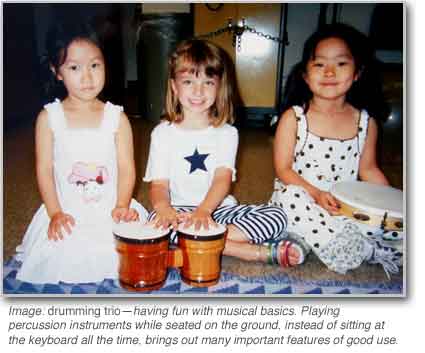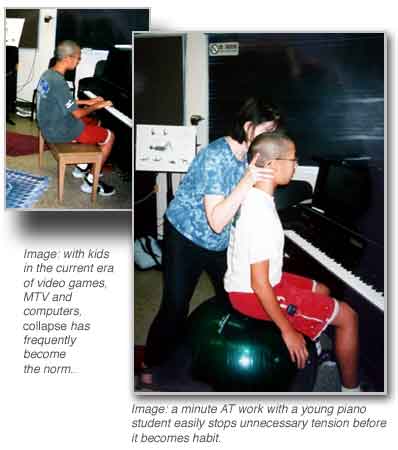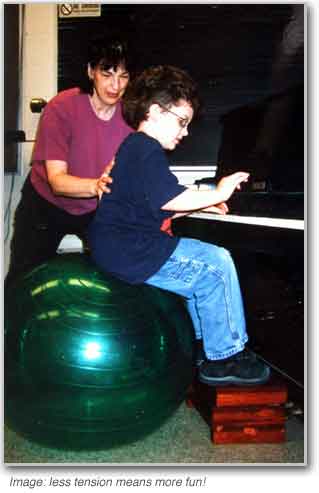
Music and the Piano
notes from my
teaching practice
The Alexander Technique can give
the pianist -- young or old -- a
different experience of playing.

|
The Alexander Technique, Music and the Piano notes from my teaching practice The Alexander Technique can give the pianist -- young or old -- a different experience of playing. |

|
The AT begins by observing the connection between head, neck and back (torso). From this primary relationship we extend out to the arms and legs. We've all seen babies demonstrate what Alexander called "good use." The Technique works essentially to take away that which interferes with this natural state. |
The beginnings of keyboard work . . .
|
|
To help the young pianist (re)discover the natural
sense of a seated balance which supports the arms while playing, he or she needs to be elevated (eg., books, cushions, or the ball). Further, foot stools should be used so that smaller students can receive more sensory input from their feet. Without these connections--both through the sitting bones and the feet, students are frequently not properly grounded, either in themselves or in their playing. |
Achieve good posture by taking away
the bad . . .
|
|
Music teachers often concern themselves |



